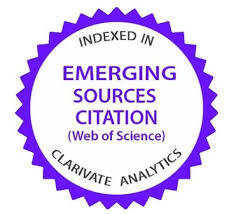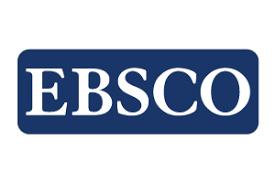Harmonious inclusion through peace education and planning for coexistence
DOI:
https://doi.org/10.35197/rx.12.02.2016.27.dgKeywords:
differences, discrimination, school environments, exclusionAbstract
The following reflection article is an analysis of how to modify inclusion schemes from a positive perspective based on peace studies and coexistence planning, considering relevant elements such as the conceptualization of discrimination, learned disability, public policies that attempt to include through exclusion and the role of coexistence planning in harmonious inclusion not only in school environments but at a social level, as an alternative that promotes respect for differences and considers the redesign of programs that, rather than favoring inclusion, wear out fighting discrimination and exclusion, resulting in emergent actions rather than preventive and formative ones. It reflects on the need to make inclusion proposals from a new paradigm that considers differences as elements that enrich school environments and that allow harmonious coexistence from diversity, which is directly linked to inclusive education observed in the coexistence planning that is being carried out in the Upper Secondary Education schools of the State of Mexico.
Downloads
References
Aguilar, B. M. d. R. (2009). Atención a la diversidad: perspectivas desde la institución escolar. En:
Educar en y para la diversidad. México: Universidad Pedagógica Nacional, pp. 45-68. Anon. (2009). Cuadernos de educación. s.l.:Cyan, proyectos y producciones editoriales S.A. Anon. s.f. s.l.: s.n.
Bello, D. J. (2011). ¿Escuelas inclusivas en una sociedad excluyente?. En: Educación inclusiva. Una aproximación a la Utopía. México: Castellanos editores.
Cacho, L., (2015). Zocalo Saltillo. Disponible en: http://www.zocalo.com.mx/seccion/opinion- articulo/las-buenas-noticias1 [Último acceso: 4 Julio 2015].
CIDE. (2015). Foros de Justicia Cotidiana en la Educación. México, s.n.
Fernández, G. I. (2008). LOS PROGRAMAS DE AYUDA PARA LA MEJORA. Disponible en:
dialnet.unirioja.es/descarga/articulo/2912320.pd [Último acceso: 16 agosto 2015].
García, C. N. (2007). "Las nuevas desigualdades y su futuro" en M. E. Díaz de Rivera. México, UIA. México, S. d. E. d. E. d. (2013). Manual para docentes mexiquenses Aprender a convivir en una
Cultura de paz. Toluca(Estado de México): s.n. Muñoz, F. M. (2001). La paz imperfecta. Granada: s.n.
Nateras, D. J. O. (2009). Red Universitaria de Aprendizaje. Disponible en: http://www.rua.unam.mx/objeto/6182/incapacidad-aprendida-del-laboratorio-a-la- sociedad [Último acceso: 12 agosto 2015].
Pascual, M. A. (2014). Pedagogía de las diferencias y la equidad...Desde y hacia una educación- cultura de paz positiva e integral. Ra Ximhai, pp. 227-256.
PVCEA. (2014). Plan de Convivencia Escolar Mexiquense. Toluca(México): s.n. Rincón, G. (2005). Rasgos y retos de la lucha contra la discriminación. s.l.:s.n.
UNESCO. (1999). Informe mundial sobre la cultura, creatividad y mercados, París : UNESCO/CINDOC Acento editorial.
Downloads
Published
How to Cite
Issue
Section
License
Copyright (c) 2016 Diana Genoveva Guerrero Arce, Eduardo Pérez Archundia

This work is licensed under a Creative Commons Attribution-NonCommercial 4.0 International License.
Usted es libre de:
- Compartir — copiar y redistribuir el material en cualquier medio o formato
- Adaptar — remezclar, transformar y construir a partir del material
- La licenciante no puede revocar estas libertades en tanto usted siga los términos de la licencia
Bajo los siguientes términos:
- Atribución — Usted debe dar crédito de manera adecuada , brindar un enlace a la licencia, e indicar si se han realizado cambios . Puede hacerlo en cualquier forma razonable, pero no de forma tal que sugiera que usted o su uso tienen el apoyo de la licenciante.
- NoComercial — Usted no puede hacer uso del material con propósitos comerciales .
- No hay restricciones adicionales — No puede aplicar términos legales ni medidas tecnológicas que restrinjan legalmente a otras a hacer cualquier uso permitido por la licencia.








